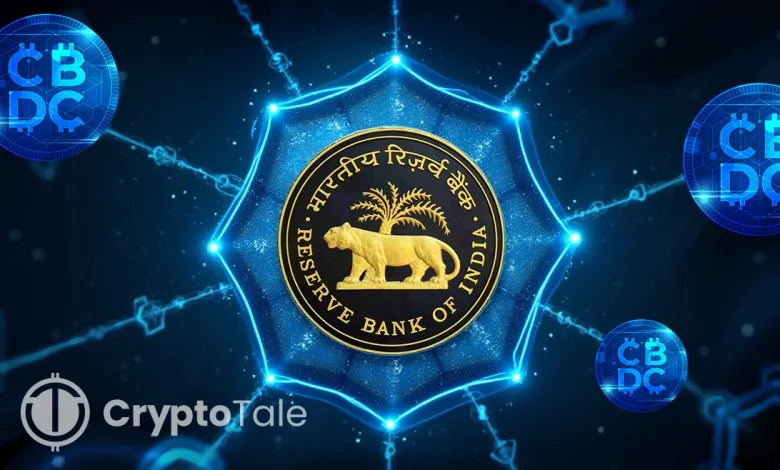RBI Governor Malhotra Pushes CBDCs for Cross-Border Payments

- RBI Governor urges global central banks to adopt CBDCs instead of stablecoins for payments.
- India’s RBI conducts CBDC trials to improve both domestic and international payment systems.
- Malhotra warns stablecoins could lead to dollarization, undermining India’s monetary control.
India’s Reserve Bank Governor Sanjay Malhotra urged central banks worldwide to adopt Central Bank Digital Currencies (CBDCs) over stablecoins for international payments. Speaking at the World Bank and IMF annual meeting in Washington, DC, he emphasized the advantages of CBDCs. He believes CBDCs could strengthen cross-border financial transactions. Malhotra called on global financial authorities to join efforts in supporting CBDCs for a more secure payment system.
He cautioned that without a broad use of CBDCs, then its cross-border benefits would not be achieved. He noted that unlike stablecoins, CBDCs provide a fiat-backed tokenized solution with traceability. Malhotra said. He also touched on the importance of international collaboration to guarantee CBDCs successful deployment.
RBI Trials on CBDCs
The RBI is currently testing two types of CBDCs: one for retail and the other for wholesale. While he noted that domestic payments in the country are well taken care of, Malhotra stated that CBDCs would greatly enhance cross-border transactions. He emphasized that a CBDC is the remedy to improve cross-border payment systems, most of which are significantly inefficient and costly.
His comments followed remarks by India’s Finance Minister, Nirmala Sitharaman, at the Kautilya Economic Conclave earlier this month. Sitharaman noted that innovations like stablecoins were reshaping global money and capital flows.
She cautioned that nations had to adjust or get left behind. Stablecoins, she suggested, are pushing countries to re-evaluate their financial systems in light of these emerging technologies.
Sitharaman’s remarks have added fuel to the debate over stablecoins. These private cryptocurrencies, which tend to be pegged to the US dollar, are being embraced by policymakers around the world.
In June, the US Senate approved the GENIUS Act on stablecoin regulation. Meanwhile, South Korea and Hong Kong have both proposed legislation to regulate domestic stablecoin markets.
Supporters of stablecoins argue that they offer significant advantages, including enhancing the global standing of national currencies. US Treasury Secretary Scott Bessent has suggested that stablecoins could lower government borrowing costs by increasing demand for US Treasuries. This, in turn, could reinforce the dollar’s dominance in global markets. For many, stablecoins are seen as a way to modernize financial systems and promote stability in international trade.
CBDCs for Economic Control
The Reserve Bank of India, however, is skeptical about the rising popularity of stablecoins. Malhotra has warned that a rising dependence on dollar-pegged crypto could contribute to “dollarizing” India’s economy. Dollarization is the process of replacing local currency with US dollars in domestic transactions, and grants a country’s control over its monetary policy.
Malhotra has cautioned that dollarization is fraught with some very dangerous implications for India. If the dollar could circulate in India, the Reserve Bank would become impotent to control money supply and interest rates. This would complicate the Indian government’s ability to implement its desired economic policies.
Related: Crypto Adoption Grows Among Indian Ministers Amid Policy Delay
India’s stand on CBDCs reflects its quest to retain control of its financial system while accepting digital technology. The international debate focuses on the potential of stablecoins. However, it views CBDCs as the safest and most durable option for cross-border payments between individuals and businesses.
The increasing focus on CBDCs and stablecoins points to a worldwide transformative process playing out in the future of finance. As countries look for ways to incorporate these digital currencies into their financial systems, India’s approach has the potential to be influential. Their result is likely to be a key determinant of the future of cross-border payments and cross-country digital currency space.





